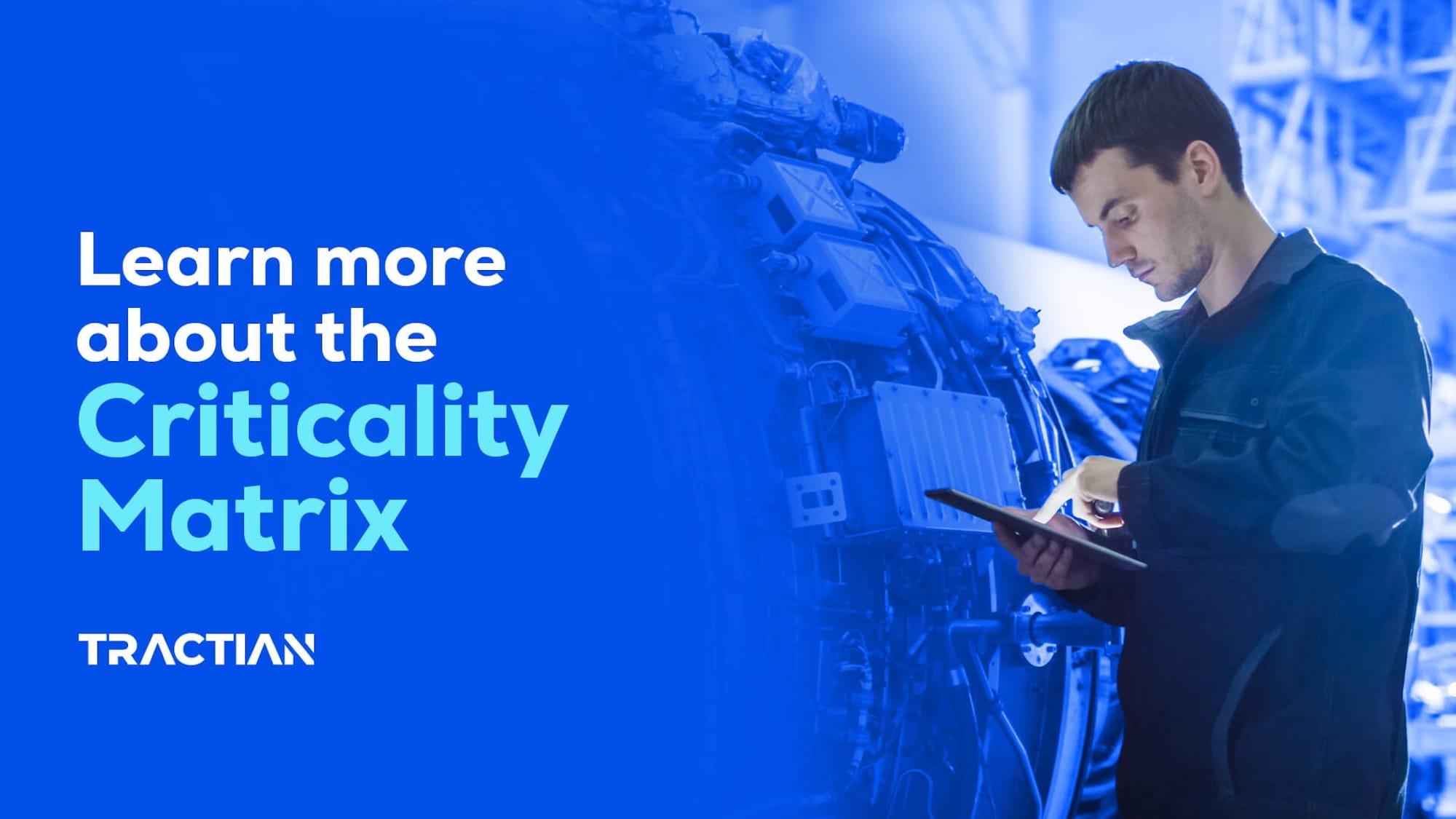The Criticality Matrix is one of the most invaluable industry tools. It helps maintenance professionals determine the importance level of assets, identify potential risks, and strategically plan preventive measures.
In the fast-paced realm of maintenance, every minute counts. That’s why organizing tasks and allocating resources efficiently is vital for success.
To maintain perfectly operating assets, maintenance and reliability teams must know which assets are the most critical. But, perfect operation doesn’t only take into account asset criticality. It’s also crucial to define priorities, and know exactly where to concentrate efforts and investments.
The problem for many industries is understanding which criteria should be taken into account to define the order of preference.
In maintenance management, these assessments help us understand how important different assets are in a production process. This allows the manager to set maintenance priorities, which helps them achieve their main goal of preventing downtime and losses.
What Is Criticality?
In the maintenance industry, it refers to the degree of importance or significance of an asset or component within a system. In other words, it’s a risk assessment; it measures how fundamental and necessary an asset is to the production chain.
Criticality levels help maintenance professionals prioritize their efforts and allocate resources effectively by focusing on the most crucial assets.
Elevate Machine Health with Precision Monitoring
By doing an asset criticality assessment, teams can develop appropriate maintenance strategies, like preventive or predictive maintenance. This helps ensure optimal performance, reliability, and mitigation of potential risks or failures.
Defining Asset Criticality in Maintenance
When establishing an asset’s criticality score, we also define which maintenance strategy is the best option. The primary goal is to maintain available machines, and keep them safe from failures and unplanned downtime.
The first – and most structured – resource to utilize when implementing a matrix of criticality is the ABC method. Its goal is to categorize assets according to their level of importance using these three questions:
- How frequent are the assets’ failures?
- How difficult is it to detect the failures?
- What impact does the failure have on general operations?
ABC asset criticality analysis also takes into account some additional factors, shown below:

Assessment factors aside, let’s move onto the ABC method assessment criteria.
Assets in Category A have high criticality, and are essential to the plant. They’re assets that stop or pause production in the event of a breakdown. This can affect floor safety and jeopardize the quality of the final product, increasing maintenance costs by more than 20%. To prevent this, all resources should be allocated to these assets.
Category B assets have an average impact. One failure won’t affect production, safety, or operation. Assets in this category only partially interrupt production, causing costs to increase by 10 to 20%.
Machinery in category C will not cause a significant impact on production in the event of a failure.

Sorting equipment using the ABC method is fundamental to any maintenance strategy. When implemented, it can help adjust strategies to:
- Create work orders with specific strategies most suitable for the asset
- Map which components in machines are considered relevant. This enables the adjustment of inventory and its replacement so they’re available when needed
- Schedule actions for times that don’t affect the whole process
- To ensure availability, study new methods that seek continuous improvement.
It’s time to implement what we’ve learned. Remember: machines of the highest necessity should be the focus of all condition monitoring.
The most common strategy is creating a predictive or preventive maintenance plan for assets with high (A) or moderate (B) criticality. Predictive systems like TRACTIAN prevent failures and anomalous behavior, reducing downtime and costs.

The Importance of the Criticality Matrix
There is a distinct relationship between how well an organization performs and the frequency of equipment failures. These can affect decision-making, resource allocation, and which machinery should be given priority.
By understanding this relationship and the principles of reliability, we can save time and improve the reliability of equipment.
To achieve high equipment availability, a well-structured maintenance plan and control system is necessary. This ensures that the right strategies are implemented to keep the equipment running smoothly.
When an asset is reliable, it has lower odds of experiencing failures – this helps preserve its features and structures. Keep in mind, this can also have an effect on the maintenance team’s productivity. It’s crucial to plan a maintenance strategy that includes periodic actions, so managers can determine appropriate intervals.
Technology and Criticality Analysis
Technologies – such as maintenance management software programs (CMMS) and monitoring sensors – have brought significant advancements to maintenance routines. These new tools have replaced traditional spreadsheets and offer better features, including visual representations and more accurate data. Integrating artificial intelligence (AI) and machine learning, they provide real-time information about the health, reliability, and availability of assets.
Once the most critical assets have been selected, monitoring software programs can be used for the asset’s predictive maintenance. These programs provide assistance, helping to avoid potential failures and allowing for the planning of inspection routines with automatic Work Orders.
Tractian maintenance management software provides tools for optimizing maintenance routines, viewing your asset tree, integrating data, and better control of processes. They also provide managers access to vital information, like RMS speed, temperature variation, and estimated energy consumption.
When installed on a machine, all of this data is collected through the sensor. Online assets collect real-time information; this lets us know which are in operation, on standby, stopped, or switched off. All of this information is sent to the maintenance manager via mobile network (4G/LTE) – no industrial WI-FI needed.
Having access to insights enables teams to detect anomalies such as imbalances, misalignments, mechanical looseness, and unusual vibrations. This proactive approach helps prevent downtime by taking necessary actions in advance.
That’s why innovation is so important – technology itself is responsible for analyzing and ensuring the accuracy of the critical data.

